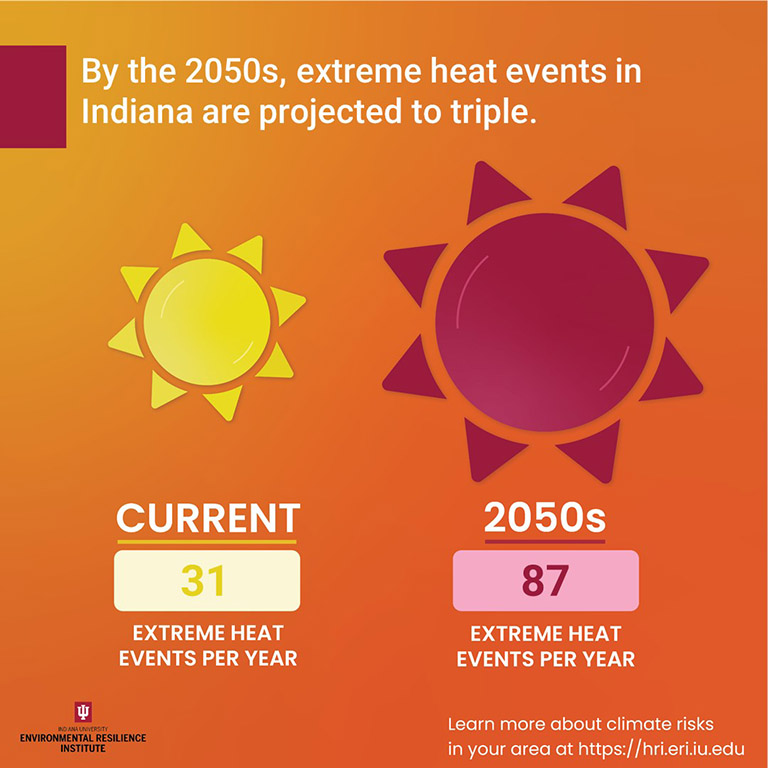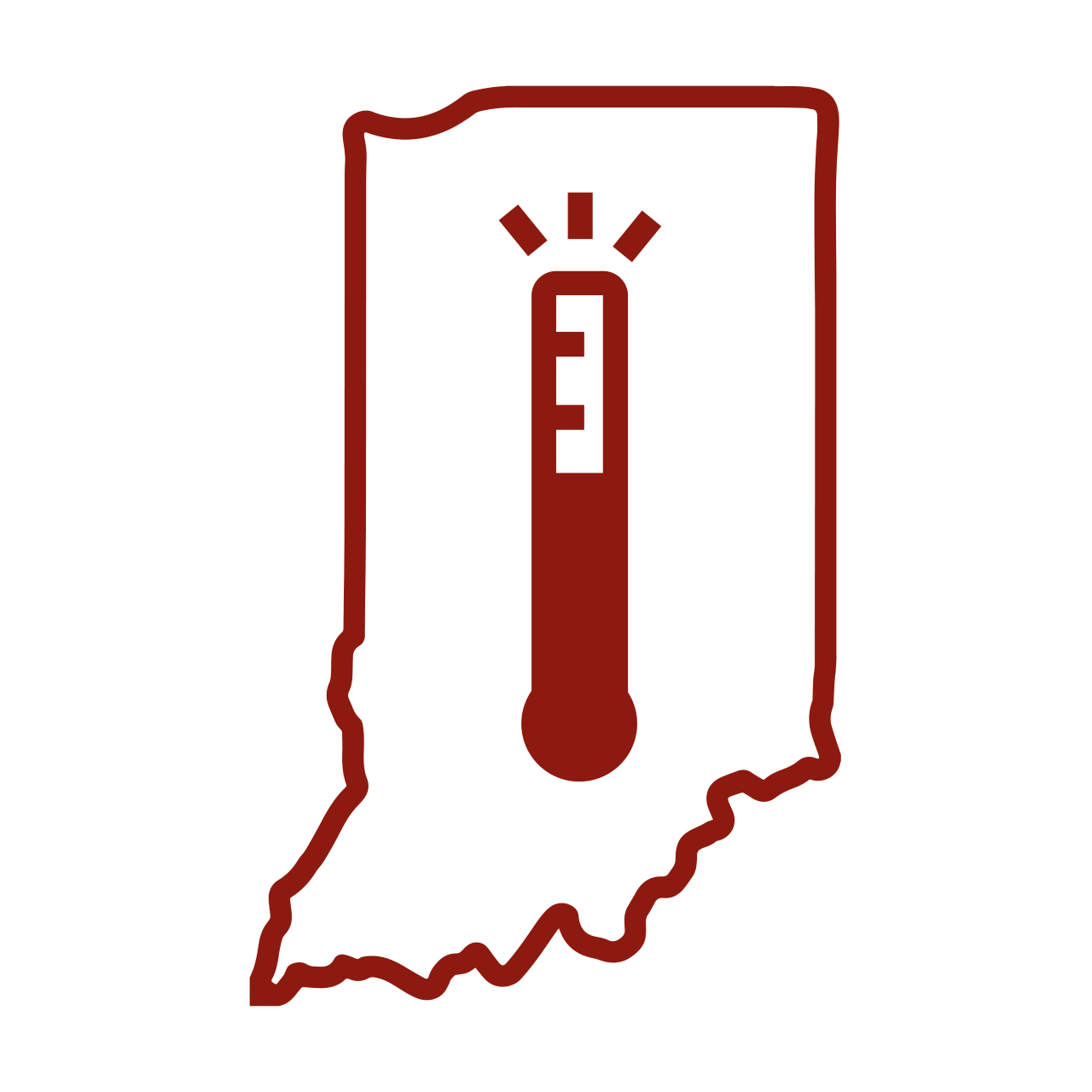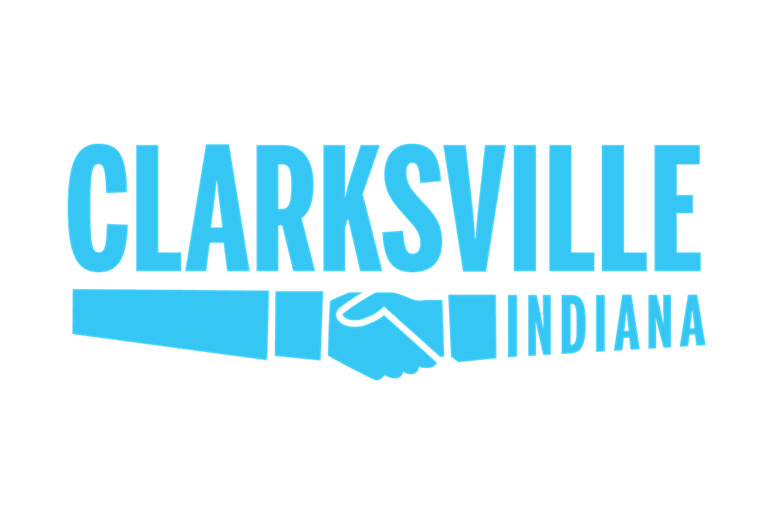With average annual temperatures increasing across Indiana, Hoosiers are becoming more familiar with the risks of extreme summer heat, which include heat-related illness and death.
To help local governments develop and implement heat relief strategies and response protocols, ERI and the Indiana Office of Community and Rural Affairs (OCRA) launched “Beat the Heat” in 2021, selecting Clarksville and Richmond as the program’s inaugural participants.
Through Beat the Heat, both communities hired full-time heat relief coordinators to lead assessments, worked with community members, and developed projects and programs to help residents cope with the health impacts of extreme heat.












